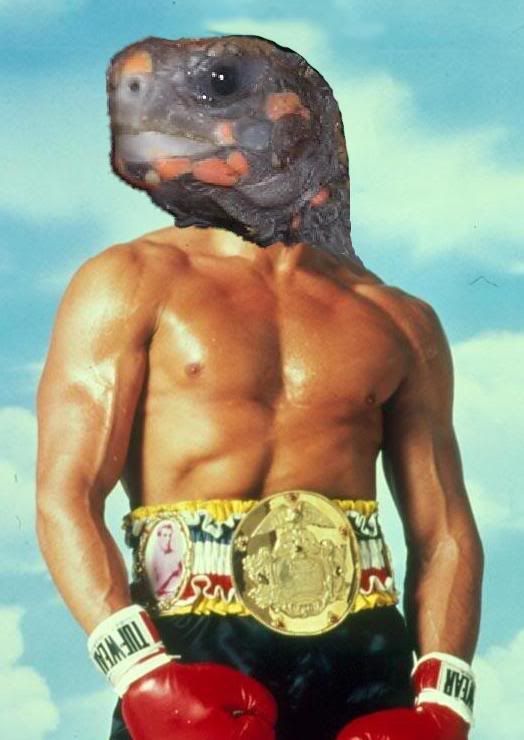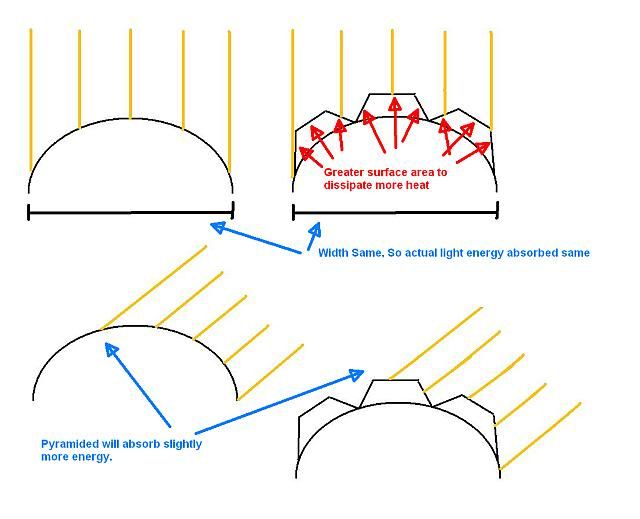Crazy idea number 357... 
Tortoises as a Family are literally older than dirt. It has always seemed very odd to me that it could be so "easy" for them to become so hideously malformed in captivity. Many consider this a sign of just HOW BAD we are doing at taking care of them. Yet at the same time they are obviously MASTER survivalists, able to have survived for so long on earth through massive environmental changes.
What if pyramiding is not a "disease" like rickets, but an in-built adaptation to environment, like skin tanning?
If we consider the "other-wise" healthy pyramided tortoise in the context of an arid, sunny environment they may have some advantages over their smooth shelled brethren. The pyramids increase surface area of the shell, without increasing incidental solar exposure. This allows for better excess heat shedding without collecting any more heat.
The valleys created by these pyramids also help to protect the sensitive scute margins from dehydration. I've noticed on Rocky that her margins are the last part of her shell to dry out, lasting far longer than the pyramids.
Obviously, this is not an ideal adaptation, as it could easily weaken the shell and is irreversable. It seems more like a desparate survival mechanism to allow the species to survive massive droughts or environmental shifts, hopefully temporary of nature, or at least to survive long enough to migrate to better lands.
Maybe by keeping our torts too dry we trigger this instinctive growth response. Their bodies think they're living in a drought, so they take on their drought species form.
Of course this doesn't mean I think its ok then to accept pyramiding in our torts. This is still not the "ideal" way for them to be, and still signals a failure in husbandry.
Tortoises as a Family are literally older than dirt. It has always seemed very odd to me that it could be so "easy" for them to become so hideously malformed in captivity. Many consider this a sign of just HOW BAD we are doing at taking care of them. Yet at the same time they are obviously MASTER survivalists, able to have survived for so long on earth through massive environmental changes.
What if pyramiding is not a "disease" like rickets, but an in-built adaptation to environment, like skin tanning?
If we consider the "other-wise" healthy pyramided tortoise in the context of an arid, sunny environment they may have some advantages over their smooth shelled brethren. The pyramids increase surface area of the shell, without increasing incidental solar exposure. This allows for better excess heat shedding without collecting any more heat.
The valleys created by these pyramids also help to protect the sensitive scute margins from dehydration. I've noticed on Rocky that her margins are the last part of her shell to dry out, lasting far longer than the pyramids.
Obviously, this is not an ideal adaptation, as it could easily weaken the shell and is irreversable. It seems more like a desparate survival mechanism to allow the species to survive massive droughts or environmental shifts, hopefully temporary of nature, or at least to survive long enough to migrate to better lands.
Maybe by keeping our torts too dry we trigger this instinctive growth response. Their bodies think they're living in a drought, so they take on their drought species form.
Of course this doesn't mean I think its ok then to accept pyramiding in our torts. This is still not the "ideal" way for them to be, and still signals a failure in husbandry.

